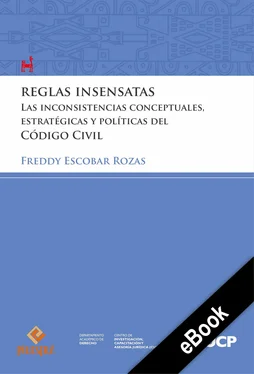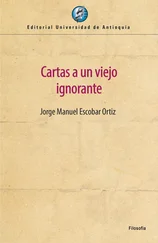19“Italy and France competed in the 2006 final of the World Cup. The next two sentences both describe the outcome: ‘Italy won’. ‘France lost’. Do these statements have the same meaning? The answer depends entirely on what you mean by meaning. For the purpose of logical reasoning, the two descriptions of the outcome of the match are interchangeable because they designate the same state of the world (…) There is another sense of meaning in which ‘Italy won’ and ‘France lost’ do not have the same meaning at all. In this sense, the meaning of a sentence is what happens in your associative machinery while you understand it. The two sentences evoke markedly different associations. ‘Italy won’ evokes thoughts of the Italian team and what it did to win. ‘France lost’ evokes thoughts of the French team and what it did that caused it to lose, including the memorable head butt of an Italian player by the French star Zidane. In terms of association they bring to mind (…) the two sentences really ‘mean’ different things. The fact that logically equivalent statements evoke different reactions make it impossible for Humans to be as reliably rational as Econs.” (Kahneman, 2011, p. 363).
20“Sometimes decisions are affected by the way they are framed: how the alternatives are described, or in what order they are arranged. The simplest example is sometimes known as the compromise effect –the attraction people feel to a middle option, even if its ‘middleness’ is the result of arbitrarily surrounding it with other choices. In the classic experiment the subjects were instructed to choose cameras from a catalogue. If they were given two choices –a midlevel model and a low-end model– they divided about evenly between them. But the subjects who were given a third choice –a high-end model– showed quite different tendencies. Of course some preferred the fancy camera, but the interesting result was that they tended to abandon the low-end version: of those picking between the middle and low model, 72 percent picked the middle choice. The addition of the new option at the top dragged people from the bottom to the middle.” (Farnsworth, 2007, p. 224).
21El litigio es iniciado por Swiss Reinsurance Co., que demanda el reconocimiento (judicial) de que la destrucción de las dos torres del World Trade Center es resultado de un solo evento.
22En términos generales, las diferentes narrativas enfatizan ciertos aspectos del evento y suprimen otros. La narrativa de Silverstein: (a) enfatiza (i) la existencia de dos comandos que secuestran dos aviones y (ii) la destrucción de dos objetos distintos en dos momentos diferentes; pero (b) suprime (i) la existencia de una sola organización terrorista y (b) la ejecución de un único plan. La narrativa de Swiss Reinsurance Co. (a) enfatiza (i) la existencia de una sola organización terrorista y (ii) la ejecución de un único plan; pero (b) suprime la destrucción de dos objetos distintos en momentos diferentes.
23“Logicians sometimes talk as if the only function of language were to covey ideas. But anthropologists know better and assure us that ‘language is primarily a pre-rational function’. Certain words and phrases are useful for the purpose of releasing pent-up emotions, or putting babies to sleep, or inducing certain emotions and attitudes in a political or judicial audience” (Cohen, 1935, p. 810). “Human beings (…) have very selective attention and memory. They are largely blind to change in their environments (…) They routinely engage in reconstructive memory. Their perceptions change depending on their intention to act” (McCubbins y Turner, 2013, p. 524).
24Los sistemas legales ancestrales también emplean conceptos legales. Dichos sistemas, empero, ofrecen soluciones sustentadas en valores morales y económicos, y no en conceptos legales.
25“Social scientists, like all sub-communities, e.g. like doctors, lawyers (…), require somewhat specialized vocabulary. This does not mean, of course, that a premium should be placed on ‘scientific’, as opposed to ordinary, usage. Indeed (…) all departures from natural language impose costs, and should be adopted lightly. However, it seems virtually indisputable that such departures must, and should, be taken on some occasions. Social sciences cannot accept words simply as they are presented themselves in ordinary speech, or natural language dictionary” (Gerring, 1999, pp. 362 y 363).
26La división del trabajo incrementa la producción y la innovación debido a que permite la especialización en base a aptitudes y competencias. Dos razones explican esta realidad. Primera: las personas que se dedican a la labor X (i) realizan esa labor de mejor modo y en menor tiempo; y, (ii) adquieren más conocimiento y más experiencia. Esas condiciones facilitan dos efectos positivos: disrupción e innovación. Segunda: las personas que no se dedican a la labor X no requieren invertir recursos para poder resolver un problema vinculado a dicha labor, pues existen otras personas especializadas que pueden resolver tal problema a menor costo (para B acudir a un médico más eficiente y más productivo que estudiar medicina a fin de tratar un mal propio) (Hardin, 2009, p. 14).
27“(…) Social scientists have developed reasonably determinate criteria for distinguishing between effective and ineffective concepts (….) In brief, the landmarks of effective concepts are resonance, domain specificity, consistency, fecundity, differentiation from other concepts, causal utility and, above all, measurability” (Ginsburg y Stephanopoulos, 2017, pp. 158 y 159).
28“Familiarity in the definition of a given term is achieved by incorporating as many of its standard meanings in the new definition as possible, or at least by avoiding any contradiction of those meanings” (Gerring, 1999, p. 368).
29“Arguably the most important criterion of a good concept is its internal coherence – the sense in which attributes that define the concepts as well as the characteristics that actually characterize the phenomena in question ‘belong’ to one another. There must be some sense of coherence to the grouping rather than simply coincidence in time and physical space. Ideology provides a particularly glaring case of inconsistency, having been defined by some authors as ‘a system of ideas with promote[s] social change’ and by others as ‘a system of ideas which prevent[s] change’. It ‘makes use of and seeks to base itself upon philosophical ideas, arguments and theories’, yet also ‘advocates action or impels to action’. It ‘contains statements of fact’ yet also ‘expresses morals, values, etc.’ It is ‘associated with the whole society or community’ yet ‘places supreme significance upon one particular class or group’. It ‘promotes, serves or reflects interests’ yet is ‘unconsciously motivated’. The coherence criterion calls for the analyst to make choices among each of these contradictory attributes and –if possible- to consolidate those attributes around a single core principle” (Gerring, 1999, pp. 373 y 374).
30“The flip side of internal coherence is differentiation, or boundedness (…) A concept differentiation derives from the clarity of its borders within a field of similar terms.
A poorly bounded concept has definitional borders which overlap neighboring concepts. The importance of differentiation is brought out nicely in the OED’s definition of ‘definition’, which (among other things) asserts that defining an object is ‘the act or product of making out, or delimiting, the outlines or characteristics of any concept or thing. The two terms (definition and differentiation) are very close in meaning” (Gerring, 1999, p. 376)
31“The larger purpose of concept formation is not simply to enhance the clarity of communication (by showing where precisely the borders between concepts are located), but also the efficiency of communication. We are looking for a way to group instances/characteristics that are commonly found together so that we can use the concept’s label as shorthand for those instances/characteristics. The utility of a concept is enhanced by its ability to ‘bundle’ characteristics. The greater the number of properties shared by the phenomena in extension, the greater the depth of a concept” (Gerring, 1999, pp. 379 y 380)
Читать дальше












